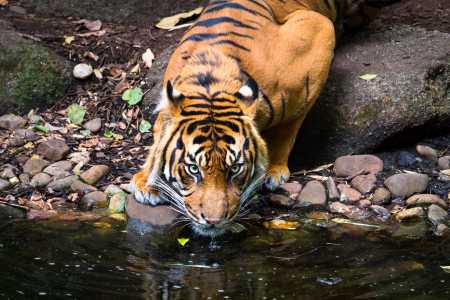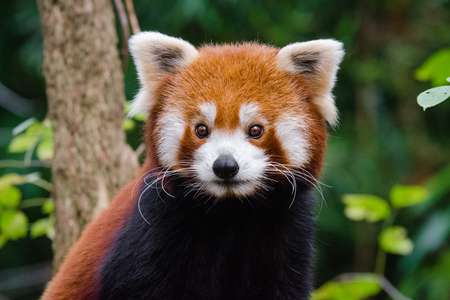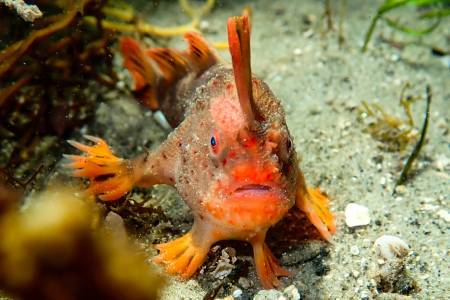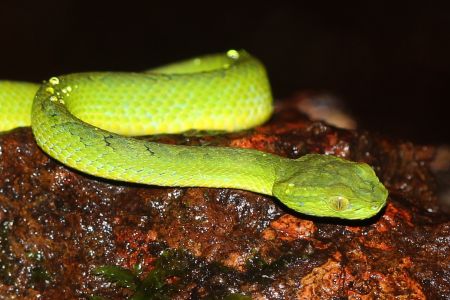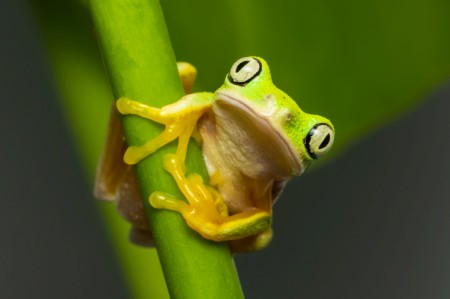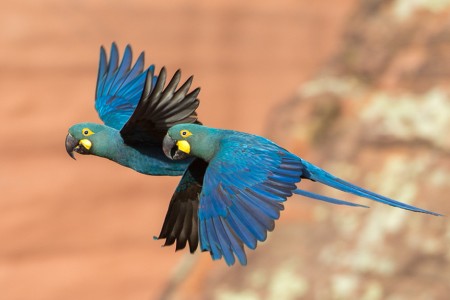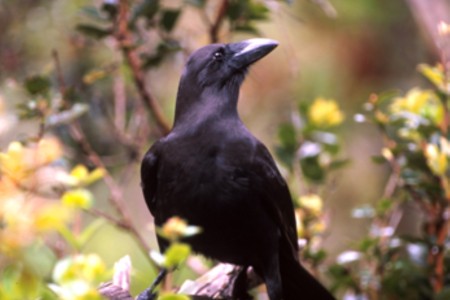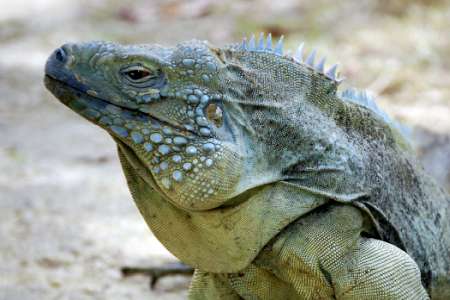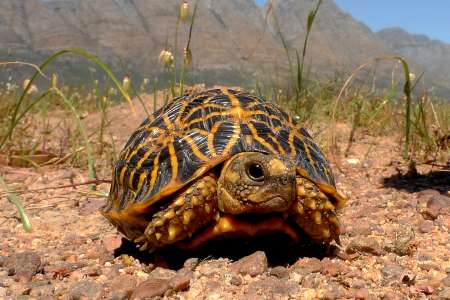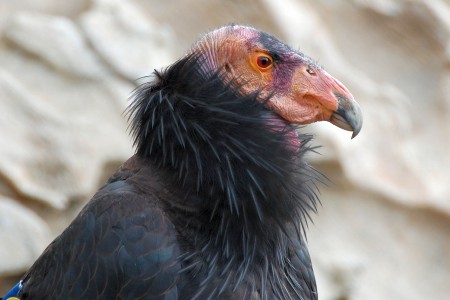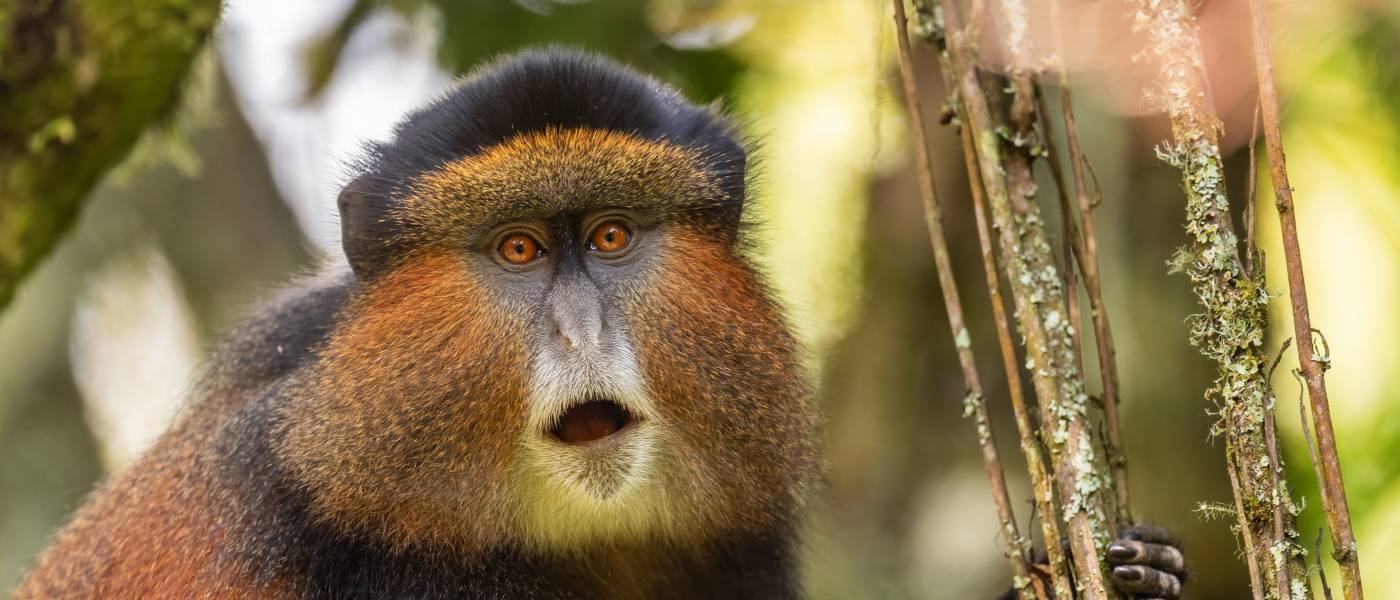

Golden Monkey
Echoes in the Trees and the Fading Calls of the Unique Species

INTRODUCTION
The Golden Monkey (Cercopithecus mitis ssp. kandti) is an astonishing primate found in the highland forests of Central Africa. Its rich, strikingly golden coat, deep blue face, and contemplative expression have earned it considerable attention and admiration.
Scientific classification
• Kingdom: Animalia
• Phylum: Chordata
• Class: Mammalia
• Order: Primates
• Family: Cercopithecidae
• Genus: Cercopithecus
• Species: Cercopithecus mitis
• Subspecies: Cercopithecus mitis kandti
Appearance and Behavior
The Golden Monkey, known for its vibrant, golden-hued fur, boasts a truly distinctive appearance. This small primate possesses a bright, glistening coat that ranges from deep gold to lighter creamy tones, depending on the individual. Their expressive faces, framed by a mane of longer hair, have dark, inquisitive eyes and a pale, contrasting snout. Adding to their allure, their hands, feet, and tail tips are usually a contrasting deep black or gray, making them stand out against their radiant fur. The overall effect is a beautifully adorned miniature monkey shimmering in the sunlight.
- Weight: up to 7 kilograms (15 pounds) for males and 4.5 kilograms (10 pounds) for females.
- Body length: up to 67 cm (26 in) for males and 53 cm (21 in) for females.
Golden Monkeys are arboreal creatures, meaning they spend most of their time in trees. Their strong limbs allow them to move gracefully between branches. Golden Monkeys are also noted for their vocalizations, which include a variety of sounds such as chatter, whistles, and barks. These vocalizations are a form of communication within the group and signify the status and relationships among group members.
Habitat and Ecology
The Golden Monkey is an astonishing primate found in the highland forests of Central Africa, and it inhabits the mountainous forests of Rwanda, Uganda, and the Democratic Republic of Congo. The lifespan is up to 19 -20 years in the wild and 30 years in captivity, and the diet is primarily herbivorous, feeding on leaves, fruits, flowers, and bamboo shoots.
The golden monkey’s social structure is fascinating. Groups usually consist of one dominant male, several females, and their offspring. These groups can range in size from 10 to 80 individuals, although larger groups are not uncommon. In the Volcanoes National Park, some groups were up to 68 individuals. However, according to Dr. Deogratias Tuyisingize’s research study, some golden monkey groups are much larger—up to 180 individuals.
Female Golden Monkeys give birth to one infant after a gestation period of around five months every two years. Newborns are weaned by 12 months. The close bond between mother and offspring is particularly strong, and juveniles often stay close to their mothers until they are sexually mature.
Because of their specialized diet and high-altitude habitat, Golden Monkeys are considered a unique and valuable species for study. Their behavior, diet, and social structure have been scientific research topics, providing insights into primate adaptation and ecology.
Conservation Status
The Golden Monkey is a remarkable species that is currently under severe threat. Although Golden Monkeys are captivating in their beauty and allure, they sadly faced a population decline. In 2017, they were listed as Endangered on The International Union for Conservation of Nature’s Red List of Threatened Species. The decline or extinction of this species will have multiple effects, ranging from immediate financial implications for average citizens in developed countries to long-term impacts on local ecosystems and global climate change. Conservation efforts are in place to protect their habitats and ensure the survival of this beautiful species.
THREATS TO GOLDEN MONKEYS

Biodiversity loss is a phenomenon witnessed in many species’ decline and potential extinction, including the Golden Monkey. According to the International Union for Conservation of Nature (IUCN), “Since the 1950s, the habitat of golden monkeys has been lost or degraded in the Virunga massif (Democratic Republic of the Congo, Rwanda, Uganda), including a reduction of approximately 50% in the Volcanoes National Park (VNP), the Rwandan part of the Virunga massif, and by a staggering 98% in the Gishwati forest located in Rwanda.” The population situations in other ranges are similarly dismal. The threats and dangers are very real and very damaging to the species.
Understanding the threats to the Golden Monkey and other species is essential to formulating effective conservation measures. This process involves careful examination of the Golden Monkey’s habitat, its interaction with local communities, the role of education and tourism in its conservation, and how illegal trade and diseases affect the species.
Habitat Destruction
Golden Monkey’s habitat is primarily found in the Virunga volcanic mountain region in East Africa. The loss of this habitat due to human activities such as agriculture, settlement expansion, and logging poses a severe threat to the species. The monkey’s dependence on specific vegetation and climate conditions makes it vulnerable to habitat changes. Efforts to conserve the habitat include legal protection of the areas, reforestation programs, and engaging local communities in sustainable practices.
Local Communities
Local communities that cohabit with Golden Monkey often use farming and forest management techniques, which are detrimental to preserving this species and others. They are also in direct conflict with the Golden Monkeys, who compete for resources and, when food is in short supply, will feed on farmed products. This does not go over well with local populations, who then view the monkeys as animals that must be destroyed. There are also some reports of people killing and eating these animals.
Lack of Awareness
Awareness, or lack of it, is very important in conservation efforts. When people are not knowledgeable about the complex biodiversity network and the unique role fulfilled by individual species like the Golden Monkey, it isn’t easy to assume that they will be promoters of the environment and protectors of this species and others. This impacts the monkey’s chances of survival.
Awareness becomes an indispensable tool in the toolbox of conservation. Acquiring in-depth knowledge about the complex network of biodiversity, the distinct roles fulfilled by individual species like the Golden Monkey, and the severe ramifications of their potential extinction provides a basis for understanding the urgency of the crisis. This knowledge empowers individuals to advocate for protecting endangered species through diverse platforms. Whether using social media platforms, delivering public talks, hosting events, or engaging in meaningful personal conversations, the goal is to increase public awareness about the threats facing the Golden Monkey.
Special programs in schools, universities, and community centers can raise awareness and understanding of the species. Workshops and training sessions for local communities, as well as easily accessible online resources, can spread valuable information, thus fostering a community of individuals actively participating in conservation efforts.
Local Communities
Local communities cohabit with many endangered species, including the Golden Monkey, making them significant stakeholders in conservation efforts. Sustainable farming practices, efforts to prevent habitat destruction, and active participation in local conservation initiatives are essential contributions that local communities can make. Education plays a pivotal role in enabling these communities to recognize the ecological importance of the Golden Monkey.
Collaboration between conservation organizations, governments, and local communities can result in tailored strategies that respect local traditions and promote the species’ well-being. By encouraging community-led initiatives and integrating traditional knowledge with scientific insights, conservation becomes a shared goal that benefits the region’s human and non-human inhabitants.
Tourism
Tourism, when managed responsibly, can be an ally to conservation efforts. Ethical tourism initiatives demonstrating respect for the environment and local communities can indirectly contribute to preserving endangered species like the Golden Monkey. It encourages engagement in low-impact activities that minimize disruption to wildlife and their habitats. Endorsement of eco-friendly accommodations, support for community-based tourism projects, and developing guidelines for responsible wildlife viewing can further align tourism with conservation goals. By promoting and practicing responsible tourism, the industry can become a positive force, fostering appreciation for wildlife, supporting local economies, and raising awareness about the importance of biodiversity conservation.
Illegal Wildlife Trade
The illegal wildlife trade poses a significant threat to the Golden Monkey, like many other species worldwide. Taking a decisive stand against such activities, refusing to support the market for wildlife products, and advocating for more robust wildlife protection laws can go a long way in curtailing the demand that drives this damaging industry. Increased public awareness about the devastating impacts of illegal wildlife trade can add impetus to global efforts aimed at combatting it. Governmental bodies, international organizations, and grassroots campaigns all play a vital role in monitoring, enforcing, and educating about illegal trade. Coordination and collaboration across borders and sectors can strengthen these efforts, making it more difficult for illegal traders to operate.
Conservation Organizations
Conservation organizations, operating at both local and global levels, play a vital role in countering biodiversity loss. Involvement in conducting crucial research, advocating for wildlife-friendly policies, and implementing conservation projects is key to protecting endangered species like the Golden Monkey. Support to organizations such as the World Wildlife Fund through financial donations, volunteering, or amplifying their work can considerably enhance their capacity. Collaborative research, community engagement, and technological advancements in monitoring and protection offer new opportunities for conservation. Investing in long-term projects, facilitating cross-border cooperation, and empowering local conservation leaders can further the global mission to protect endangered species.
Diseases
Diseases can also significantly affect declining species like the Golden Monkey. Understanding and monitoring the diseases that affect this species is crucial for conservation. Some diseases impacting the Golden Monkey include parasitic infections, respiratory illnesses, and diseases transmitted from humans and domestic animals. The proximity between the Golden Monkey’s habitats and human settlements increases the risk of disease transmission. Strategies to manage and mitigate these diseases include regular health monitoring, habitat management to reduce human-wildlife conflicts, and education and awareness programs for communities living near the species’ habitat.
In short, efforts to conserve endangered species like the Golden Monkey require comprehensive and concerted action at all levels of society. The journey towards effective conservation encompasses raising awareness, advocating for necessary changes, supporting local communities, promoting ethical tourism, preventing illegal wildlife trade, backing conservation organizations, and adopting environmentally friendly practices. Understanding the intricacies of the Golden Monkey’s existence, its threats, and the opportunities for protection and preservation are essential steps in fostering a sustainable future for this remarkable species.
IMPORTANCE OF GOLDEN MONKEYS
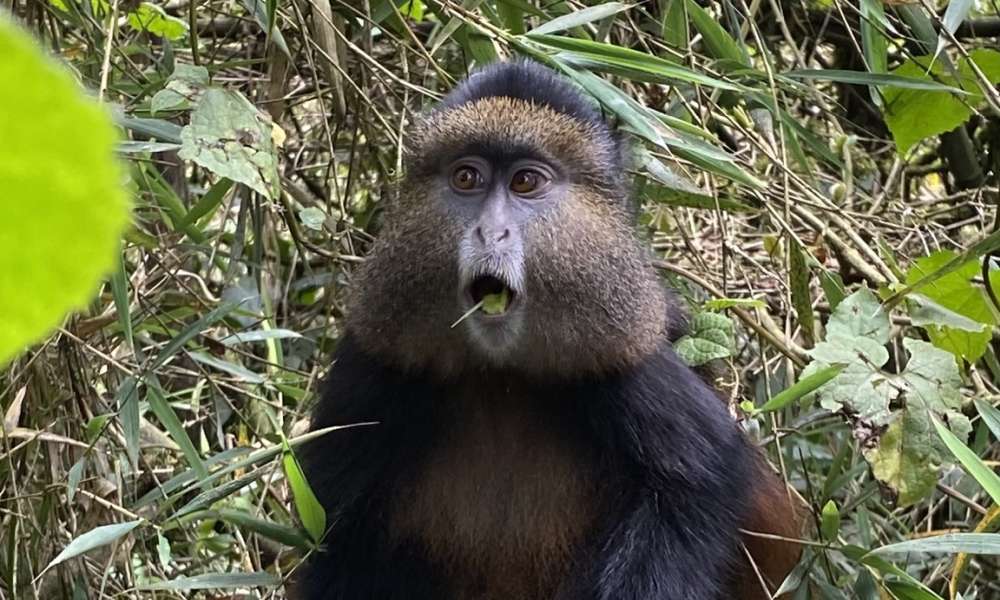
Economic Implications of Golden Monkey Population Decline
The decline in Golden Monkey populations presents immediate financial implications for average citizens in local communities and other countries. International organizations, governments, and NGOs often provide funding for research, protection, habitat restoration, and monitoring initiatives and are partially financed by taxpayers in developed countries. Direct costs relate to extensive scientific studies, including field research, data analysis, and innovative conservation approaches. Indirect costs stem from enforcing protective measures such as habitat preservation, anti-poaching laws, and community outreach programs. Additionally, the economic implications extend to the international trade in wildlife products, where regulations and monitoring require further investments to be effective. The cumulative financial burden underscores the global nature of extinction issues the Golden Monkey faces and the shared responsibility needed to address it.
Effects on Local Ecosystems
The Golden Monkey’s role in its local ecosystem is multifaceted and integral. Because they often swallow the seeds of fruits they eat, they are avid seed dispersers, playing a crucial part in maintaining plant diversity and forest structure. Their declines lead to decreases in the regeneration of certain plant species, thus impairing the overall biodiversity and health of the ecosystem. A disruption in the numbers of monkeys in this delicate balance leads to overpopulation or decline of other species and even further extinctions. Changes in soil composition and quality, affecting other flora and fauna, are also brought on as the populations of Golden Monkeys decline.
Correcting these imbalances requires expensive ecological restoration and management, including reintroducing species, controlling invasive species, and continuous monitoring. The implications of this are not limited to the immediate environment because they cascade to adjacent ecosystems, demonstrating the interconnected nature of these habitats and the far-reaching consequences of the Golden Monkey’s decline.
Role in Climate Change Mitigation
The Golden Monkey’s role in mitigating climate change is significant. By aiding in seed dispersal, they support the growth of various trees and plants that absorb carbon dioxide, thus reducing this greenhouse gas in the atmosphere. This contribution to the process of carbon sequestration is an important aspect of combatting global warming. The loss of this species hinders the ecosystem’s capacity to perform this vital function, exacerbating the already severe impacts of climate change. The continuing destruction of their habitat through deforestation and human encroachment further releases stored carbon into the atmosphere. This chain reaction highlights the complex interplay within our ecosystem and the vital role each species, including the Golden Monkey, plays in maintaining this balance. Investing in preserving this species indirectly supports global efforts to tackle rising global temperatures and fosters a more sustainable approach to natural resource management.
Impacts on the Agricultural Sector
The decline of Golden Monkey has also affected the agricultural sector. While mostly eating a fruit diet, they also consume many insects. They indirectly contribute to maintaining crop health by limiting insect populations that could become agricultural pests.
Their decline could lead to increased pest populations, resulting in crop damage and a subsequent decrease in yield. These changes could increase operational costs for the agricultural industry, including higher expenses for pest control measures. The financial burden is then passed on to consumers through higher prices for agricultural goods. Furthermore, the decline of specific plants due to reduced seed dispersal by Golden Monkeys might impact the availability of certain crops, affecting market supply and pricing. These factors together represent a complex interconnection between biodiversity and agriculture.
Legislative and Enforcement Expenses
Implementing protective measures for endangered species like the Golden Monkey is costly. Governments, international organizations, and NGOs (non-governmental organizations) must collaborate to enact and enforce laws that protect the species and its habitat. When done correctly, this involves significant investments in personnel training, equipment, legal processes, community engagement, and international cooperation. Monitoring compliance and adapting strategies to changing circumstances further adds to these costs. The severe threat to the Golden Monkey makes these costly steps necessary to avoid extinction and preserve biodiversity. This global challenge adds strain to governments’ budgets across the world, with taxpayers, both locally and in developed countries, shouldering this financial burden.
Loss of Ecotourism Opportunities
With its striking appearance and behavior, the Golden Monkey offers immense potential for ecotourism. For tourists seeking unique wildlife experiences, their habitats could be attractive destinations. Declines or extinction will cause lost opportunities for ecotourism, impacting local communities that could have benefited from tourism revenue. Ecotourism fosters community development, conservation awareness, and sustainable practices. A loss of these services affects regional and global economies, depriving us of a unique natural heritage. A decline in ecotourism also reduces funding and public interest in conservation initiatives, which spirals into efforts to preserve other endangered species and habitats.
HOW TO HELP GOLDEN MONKEYS
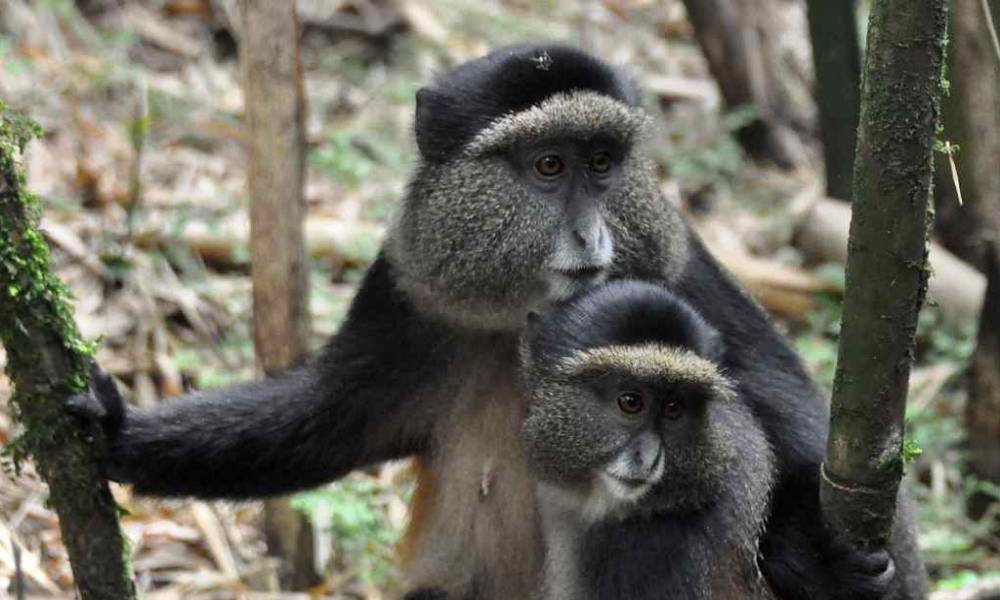
Biodiversity loss encompasses the decline of species, such as the golden monkey, posing severe global challenges. These challenges stem from local and international issues, such as climate change, pollution, and habitat losses. Individual efforts are crucial in fighting these problems, but addressing them thoroughly demands a global response by effective leadership committed to finding worldwide solutions. Such international cooperation can lead to measures that conserve endangered species and maintain ecological balance.
Education and Awareness
Educational initiatives play a significant role in raising awareness about endangered species like the golden monkey. A thorough understanding of the species, its habitat, and the global threats it and the planet face can motivate people to take effective action. Sharing this information through schools, social media, and public forums can build a knowledgeable society prepared to support conservation locally and internationally. This collective awareness can spur policy changes and community actions that protect these species.
Encourage Ethical Tourism
Promoting ethical tourism is a way to protect golden monkeys in their natural habitats. Tourism initiatives focusing on low-impact activities and responsible engagement with wildlife can educate tourists and provide economic incentives for conservation. Helping to establish and enforce guidelines for ethical interaction with these creatures promotes their well-being and contributes to broader conservation goals.
Support Conservation Organizations
Conservation organizations actively work towards protecting and surviving species like the golden monkey. Supporting these organizations through donations, volunteering, or advocacy amplifies their impact. These groups often bridge the gap between local action and global policy, making them vital players in the conservation strategy.
- Primate Specialist Group at primate-sg.org
- Wildlife Conservation Network at wildnet.org
- Neotropical Primate Conservation (NPC) at neoprimate.org
Adopt Environmentally Friendly Practices
In addition to other threats, climate change affects all species, including the Golden Monkey. We all can adopt environmentally friendly practices, such as lowering our dependence on CO2-producing fuels, reducing waste, utilizing renewable energy, and responsible consumption of environmentally friendly products. All these help mitigate climate change’s effects, and individuals and corporations can adopt these practices, making a positive difference locally and globally. Effective global leadership that will promote solutions is the only way climate change and many other issues will truly be defeated. Global issues need global solutions, so elect leaders up to the task.
Engage in Citizen Science Projects
Citizen science projects are becoming vital tools in conservation efforts. Researchers can gather essential information about species like the golden monkey by involving the public in data collection and monitoring. Participation in these projects can foster a deeper connection to the conservation cause and provide scientists with valuable data that inform effective conservation strategies.
In conclusion, conserving the golden monkey requires a concerted effort at every level of society. From education and sustainable practices to supporting conservation organizations and embracing environmentally friendly habits, every individual’s actions contribute to the broader goal of preserving this unique species. A harmonious blend of local initiative and global cooperation ensures that the golden monkey and countless other species, including humans, thrive for future generations.

